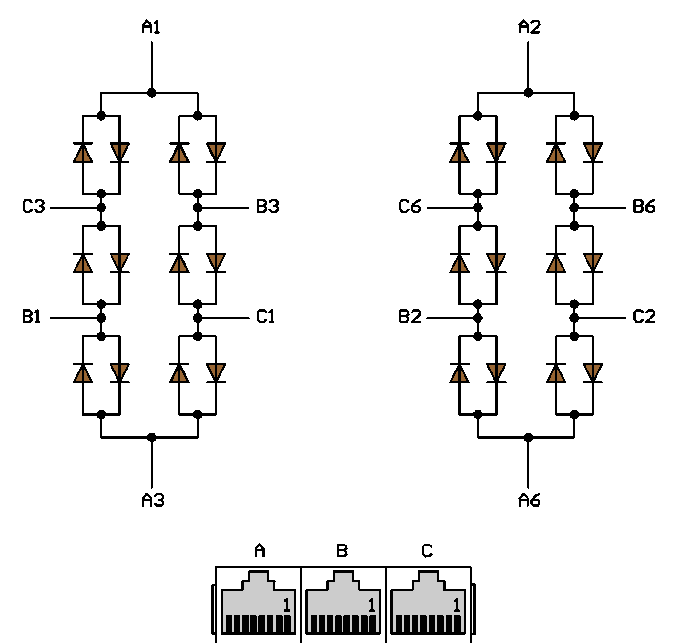Ethernet uses \$\pm0.85\;\mathrm{V}\$ signaling so a signal will only be able to "activate" one diode pair. So any transmission only has a chance to reach the two immediate neighbors (no current will flow more than 1 "hop" round the loop).
Now you can notice the trick which will work only with 3 devices: both of computer A TX lines' have RX lines from computers B and C in immediate neighborhood and it's own RX lines on the far side of the loop. You really don't want to hear what you are sending since it would trigger the collision detection algorithm.
Two interesting points:
The diodes will heavily attenuate the signal so it probably won't work over longer distances.
You cannot use resistors since they would linearly attenuate the signal and after going all the way around the loop it would finally reach your own RX line. It would be attenuated but the receiver circuit is very sensitive so it would still be able to detect is as a collision. You need a nonlinear element (like a diode) that provides a sharp cutoff.
PS. It is a really clever circuit. I cannot imagine inventing something like that on my own. :)

